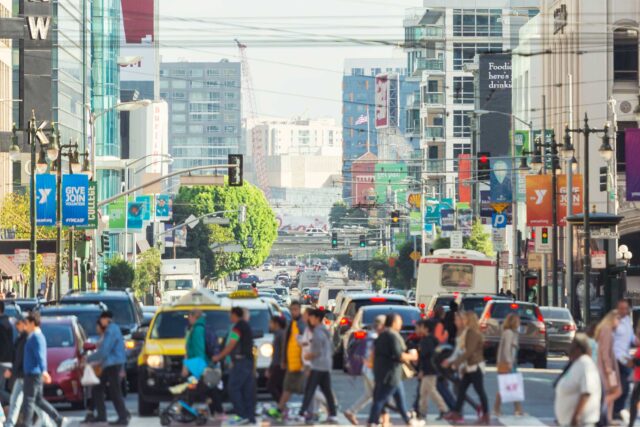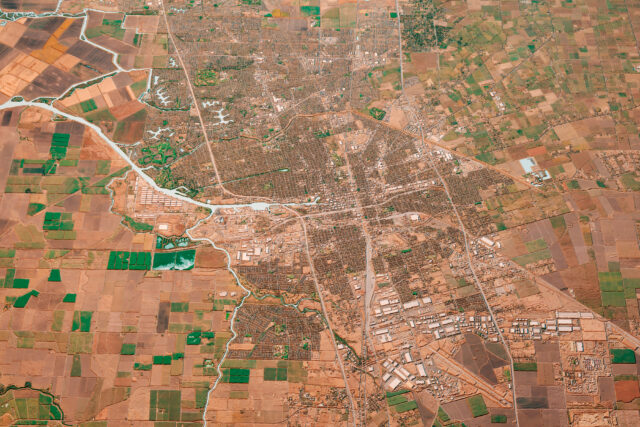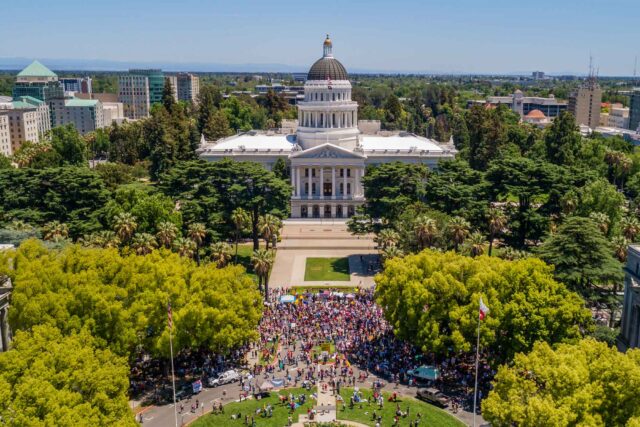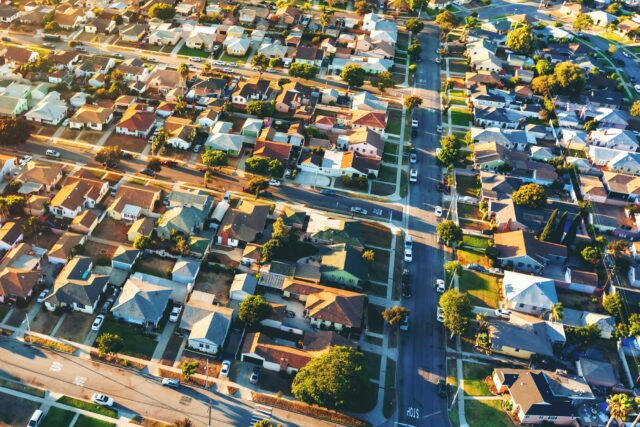Political districts are redrawn every ten years after the census. Over time, as the population shifts, overpopulated districts dilute the power of their residents by forcing them to share their representative with a larger number of people. Since each district is constitutionally required to have the same population, faster-growing areas of the state end up with more representatives on average after lines are redrawn.
New census data identify how district populations have grown or shrunk over the last ten years, compared to “their ideal population,” or what their population would be if California’s growth had been evenly distributed across the state. The maps below highlight a few themes for California’s congressional, state senate, and state assembly districts.
Most of the districts are fairly close to their ideal population already, reflecting the fact that people move around less than they once did. However, a few areas of the state show up as particularly out of balance. The eastern Bay Area, the Sacramento region, and the western edge of Riverside County close to Los Angeles have all seen substantial growth, leading to overpopulated districts. By contrast, the far north of the state has seen slow population growth or even decline—and is a common location for underpopulated districts.
Los Angeles County has seen especially slow growth. Despite having gained population, it is home to many of the most underpopulated districts, even as nearby areas to the east and south have boomed. The most underpopulated congressional district—district 40 in the heart of LA—is about 30 miles from the most overpopulated—district 45 in Orange County. The two districts currently diverge by almost 125,000 residents. Seven of the ten most underpopulated congressional districts fall at least partly in LA County, as do eight of the ten most underpopulated state senate districts and six of the ten most underpopulated state assembly districts. All of them will need to partly merge with neighboring territory to bring their populations closer to balance.
Congressional redistricting comes with an added complication this time: the state lost one congressional seat because its population did not grow fast enough relative to the rest of the country. While this is a loss for the entire state, some areas will feel that loss more acutely than others, and underpopulated regions will be especially vulnerable to change.
None of these changes tells us exactly how the lines will be drawn. California’s Citizens Redistricting Commission must consider many different criteria, so there is no guarantee the districts will look anything like the ones we have now, even for places that are close to their ideal population. The commission will be drawing the lines over the next few months. PPIC will bring new analysis as events develop.
Topics
Census Political Landscape political representation Population redistrictingLearn More

New Census Data Sheds Light on California’s Changes

Racial Representation and Partisan Leanings in California’s Final Redistricting Maps

Redistricting and the Changing Demographics of the California Legislature

Redistricting Opens New Opportunities for Communities of Color

Understanding the Geography of California’s Final Redistricting Maps





